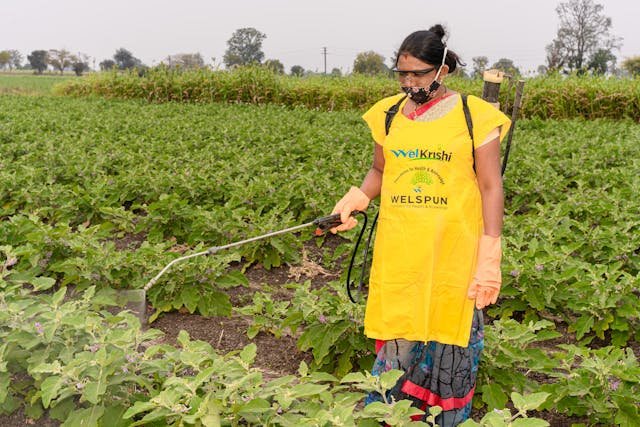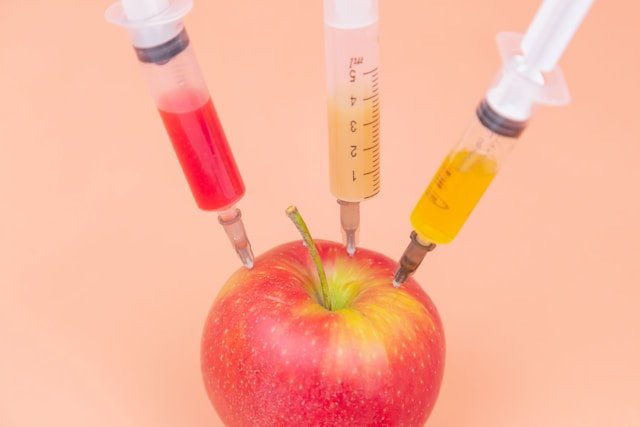The following lists are helpful in making decisions on what produce to buy organic. Since organic produce does cost more, it is useful to know which are more necessary to buy organic, where a true need exists to avoid high levels of pesticide residue.
Every year, the Environmental Working Group™ (EWG) lists 12 foods highest in pesticide residue, based on data they analyse from tested samples. Here is the 2015 Dirty Dozen List™. Items are listed in order, starting with the highest residue traces.
- Apples
- Peaches
- Nectarines
- Strawberries
- Grapes
- Celery
- Spinach
- Sweet Bell Peppers
- Cucumbers
- Cherry Tomatoes
- Snap Peas
- Potatoes
Almost 2/3 of 3,015 produce samples tested by the USDA in 2012 contained pesticide residues and 165 different pesticides were found on thousands of fruit and vegetables samples
Apples: The FDA found 36 different chemicals on apple samples, ½ of which are neurotoxins that may cause brain damage in a study conducted in 2012. The EWG found at least 1 pesticide residue on 99% of apples tested in 2015.
Strawberries: Highest pesticide dosed crops in the US, with 300 pounds of pesticides applied to each acre and 36 individual pesticides found on each fruit
Raspberries: Raspberries are dusted with 39 chemicals and 58% of tested fruits registered positive for contamination
Cherries: Cherries have as many as 25 pesticides per fruit
Grapes: One grape has 15 pesticides and 35 different pesticides are typically used in vineyards that grow them
Celery: Celery is grown using at least 29 different chemicals that cannot be washed, as celery does not have a peel. In 2011, the FDA analysis of celery found that 94% of samples had pesticide residue levels above designated safe levels.
Peaches: 45 different pesticides are regularly applied to peach crops. 98% of peaches were found by the Environmental Working Group (EWG) to have at least 1 pesticide residue, and the skin of the peach does not offer any protection.
Spinach And Greens: In 2011, the FDA found spinach to be most frequently contaminated with the most potent pesticides used on food and 85% of spinach tested was contaminated at dangerous levels with one or more of the 36 pesticides used at farms
Sweet Bell Peppers: In 2011, the FDA found that 68% of bell peppers tested had high levels of chemical pesticide residue. Pepper’s thin skin offers little protection and the waxy layer consists of harmful substances
Nectarines (imported): 97% of samples were found by the EWG to have at least 1 pesticide residue
Tomatoes: The FDA confirms that more than 30 pesticides are used in growing tomatoes, and the skin does not stop the pesticide chemicals from infiltrating to the inside. The EWG found single samples of cherry tomatoes to have 13 different pesticides.
Potatoes: One average potato was found by the EWG to have more pesticides by weight than any other type of produce.
Hot peppers: When the USDA tested more than 700 samples of hot peppers in 2010 and 2011, they found pesticide residue from three highly toxic insecticides, known as oxamyl, acephate, and chlorpyrifos, at levels high enough to cause concern.
Domestic Blueberries: Found to have organophosphate insecticides residues that are considered highly toxic to the human nervous system.
Kale And Collard Greens: Found by the EWG to have residue of the insecticide organophosphate, which is considered highly toxic to the human nervous system.
Just as the EWG puts out a list of foods highest in pesticide residue, they also publish the Clean Fifteen™, which lists fruits and vegetables with lowest or no pesticide residue.
Foods Lowest in Pesticide Residues
- Avocados
- Sweet Corn
- Pineapples
- Cabbage
- Frozen Sweet Peas
- Onions
- Asparagus
- Mangoes
- Papayas
- Kiwis
- Eggplant
- Grapefruit
- Cantaloupe
- Cauliflower
- Sweet Potatoes
The majority of pineapple, kiwi, mango, papaya, and cantaloupe samples had no pesticide residue at all.
Photo by EqualStock IN



